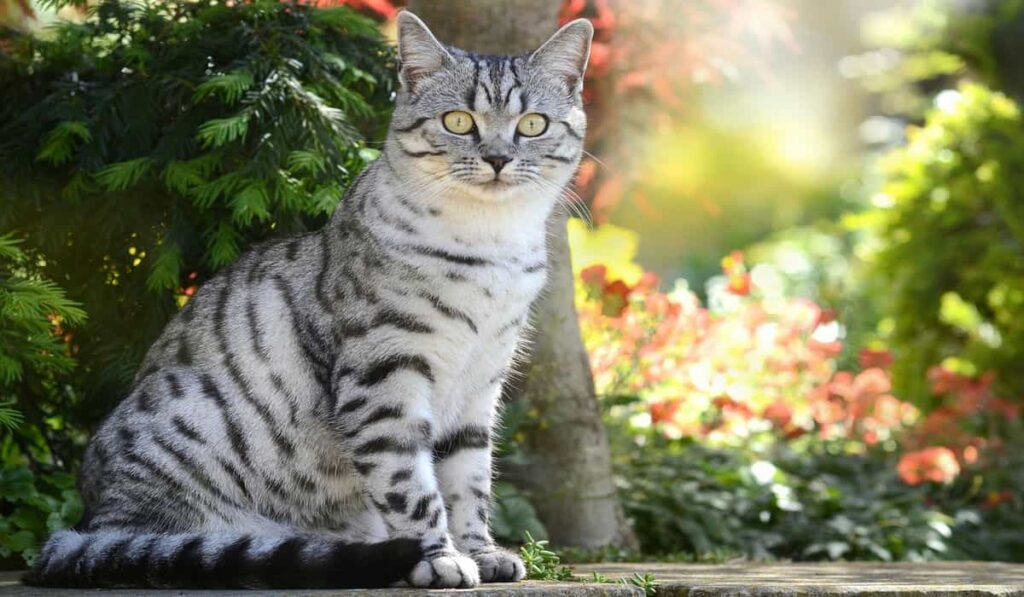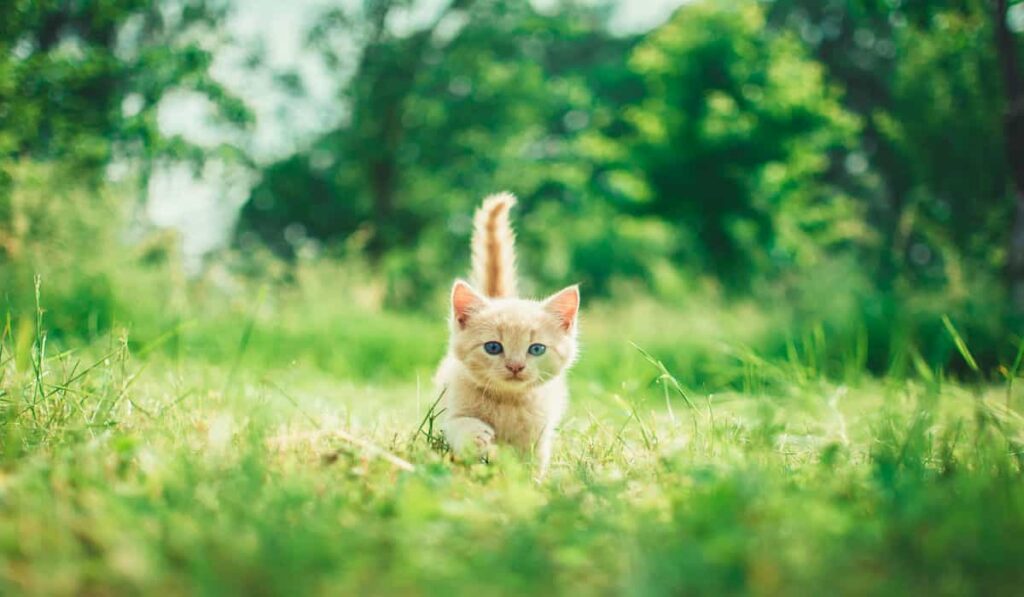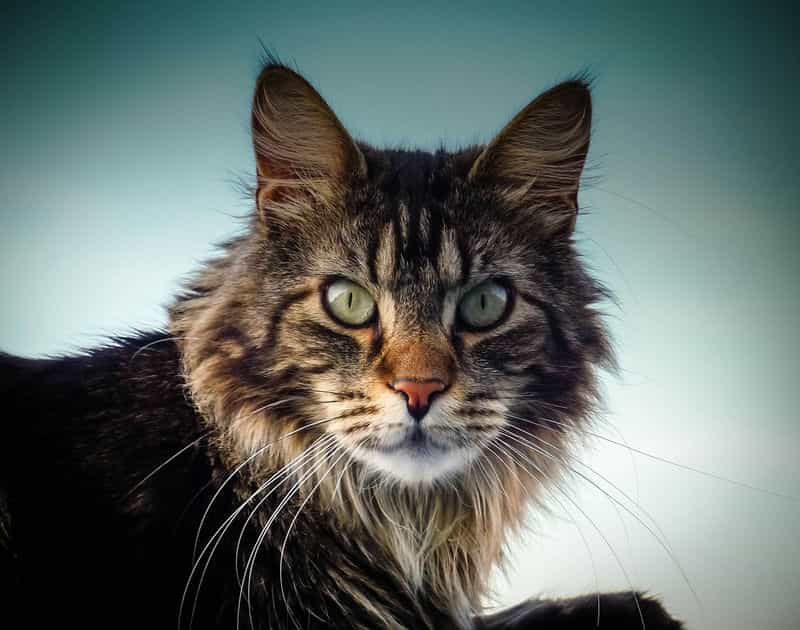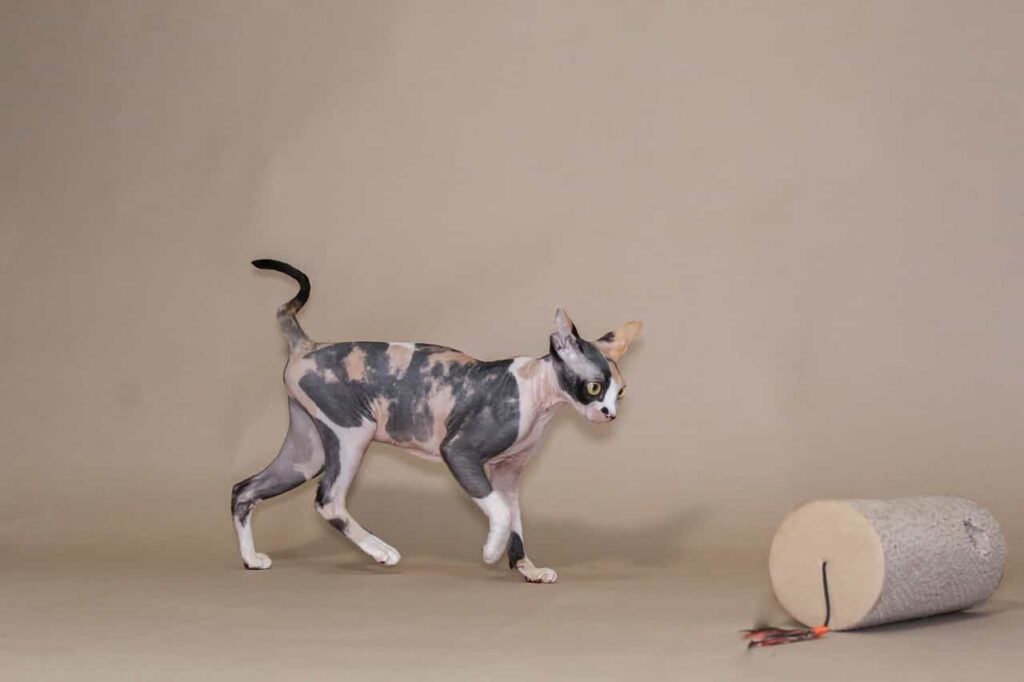Welcome to the captivating world of the Toyger Cat Breed, where the allure of the wild meets the comforts of home. These medium-sized domestic cats, celebrated for their “Toy tiger cat characteristics,” epitomize the perfect blend of a wild appearance with a gentle demeanor. The Toyger, with its striking tiger-striped coat, is more than just a visual marvel; it’s a testament to the remarkable achievements in “Cat breed development.”
These “intelligent cat breeds,” developed in the late 20th century, have since captured the hearts of cat enthusiasts worldwide. Their uniqueness doesn’t end with their “unique cat coat patterns” but extends to their endearing personalities, making them a sought-after companion in many households. As we delve deeper into understanding the “Toyger Cat Breed,” from “Toyger Cat price” to “Toyger Cat lifespan,” you’ll discover why this breed is not just a pet but a fascinating addition to any family.


Table of contents
Toyger Cat Breed
Toy+Tiger= Toyger. How is the name? A unique and eye-catching look of the Toyger cat breed raised from crossbreeding between a Bengal cat and a Domestic Shorthair cat. Don’t be fooled by their tiger-looking stripes; they aren’t dangerous. They’ve no connections with the Tigers.
If you look at a Toyger cat, it’ll look just like a Tiger miniature. One of the newest cat breeds, Toyger, comes with a wild look and domestic characteristics.
Breed specialty of TOYGER Cat
Other names:
Toy Tiger
Personality:
Intelligent, playful, active, and friendly with children, pets, and people.
Coat:
Short and Tiger-like striped with Black, Orange, and White.
Eye color:
Dark Brown to Hazel
Length:
Up to 18 inches
Weight:
About 15 Pounds
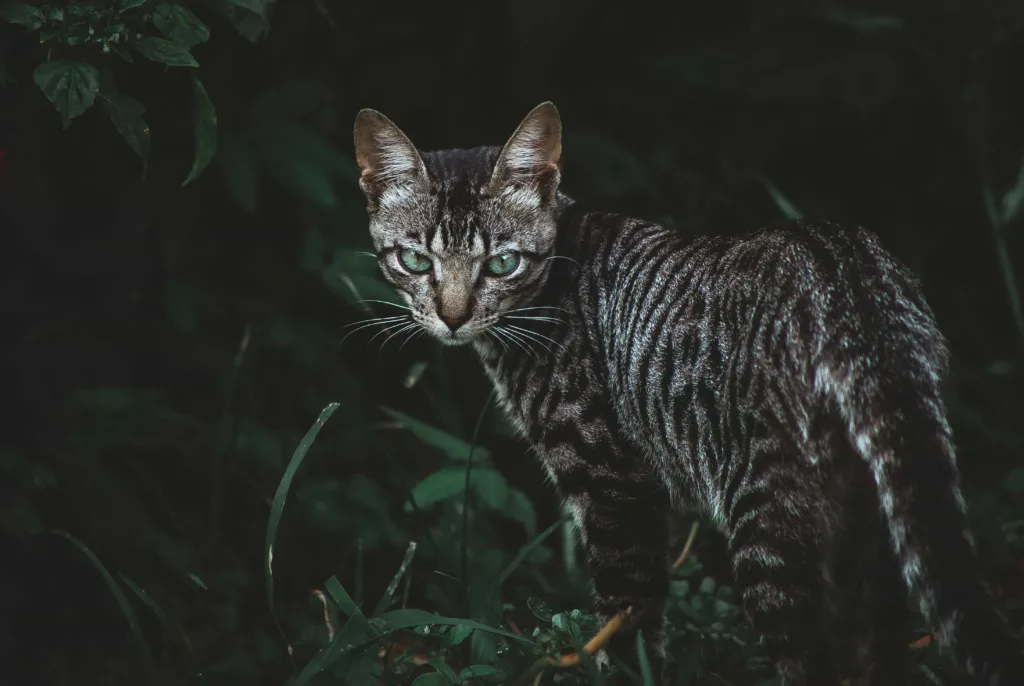

Maintenance and grooming needs:
Minimal
Vocalizing tendency:
Medium
Life Span:
Up to 15 years
Hypoallergenic:
No
Origin:
USA
Varieties of Toyger cat:
Only Brown Mackerel Tabby.
Origin of the Toyger Cat breed
The Toyger cat breed emerged in the 1980s. Judy Sudgen was the daughter of Jean Sudgen- The original breeder of the Bengal cat breed. Judy wanted a domestic cat with a wild striped coat-just like a Tiger and an `M` shape on their forehead. She had a Bengal cat named Millwood Rumpled Spotskin.
Millwood had the usual Tabby marking on its head and forehead. So, she crossbred Millwood with a domestic Shorthair named Scrapmetal. Judy also imported Tom’s cat from Kashmir, India, named Jammie Blu. Jammie also had distinctive stripe markings.
Two other breeders, Anthony Hutcherson, and Alice Mckee joined Judy in this program, and the Toyger cat breed emerged for the first time. The International Cat Association (TICA) accepted Toyger as a breed. In 2000, its exhibition class was developed. They obtained champion status in 2007, and TICA recognized Toyger Club.
The appearance of Toyger cat
Body shape:
Slim, sleek, medium-sized, and strong-muscled body. The shoulder and hip are also slim and proportionate to the body.
Head:
Oval and medium-shaped head with a cylindrical muzzle.
Ears:
Wide-based ears are pointed and situated at the corner of the head. An `M` shape is visible on their forehead. A broad and wide nose is situated between the two eyes on the face.
Eyes:
Their eyes are round, large with an innocent look, and hooded upper inside. The eyes can be dark, Broen to Hazel.
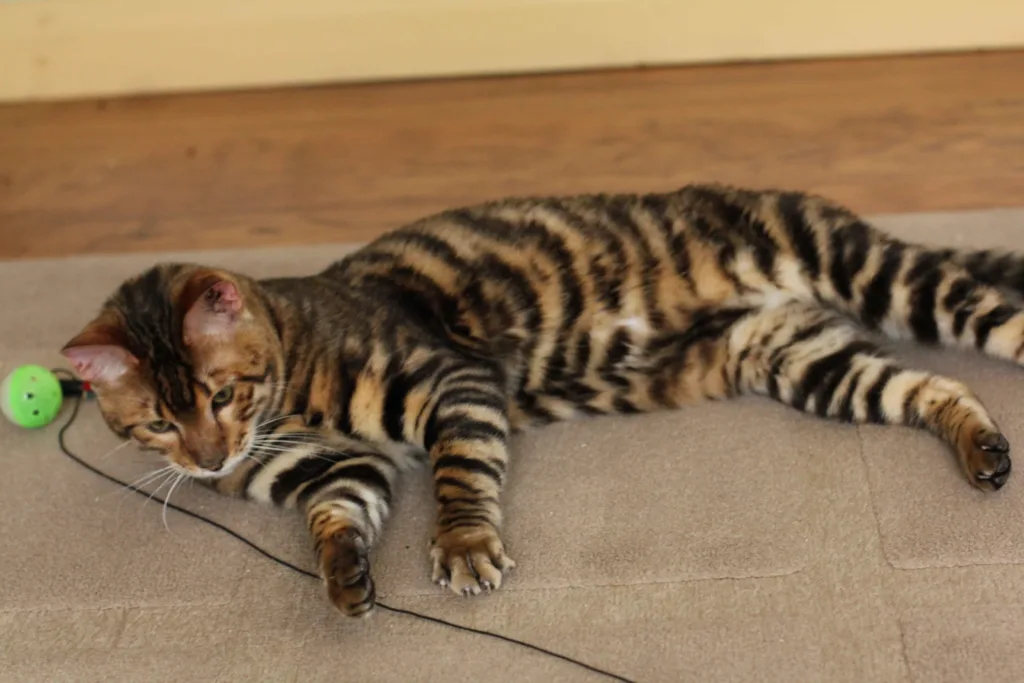

Legs and paws:
The legs are also long and slim with strong bones, and the paws are small, with five fingers at the front and four at the back.
Tail:
Long and thin tail with a rounded tip.
Coat:
Tiger-stripe coat all over the body with Black, Orange, and White colors.
Temperament and nature of Toyger breeds
Toygers are very friendly with children and pets. They are also very active, playful, and intelligent. If you want a calm and alp cat, then sorry, Toyger may not be your best cat.
They need stimulation most of the time. So, don’t make them bored. If you live in a calm and silent house, having a Toygar for you will be difficult. In that case, please keep 2 cats instead of one.
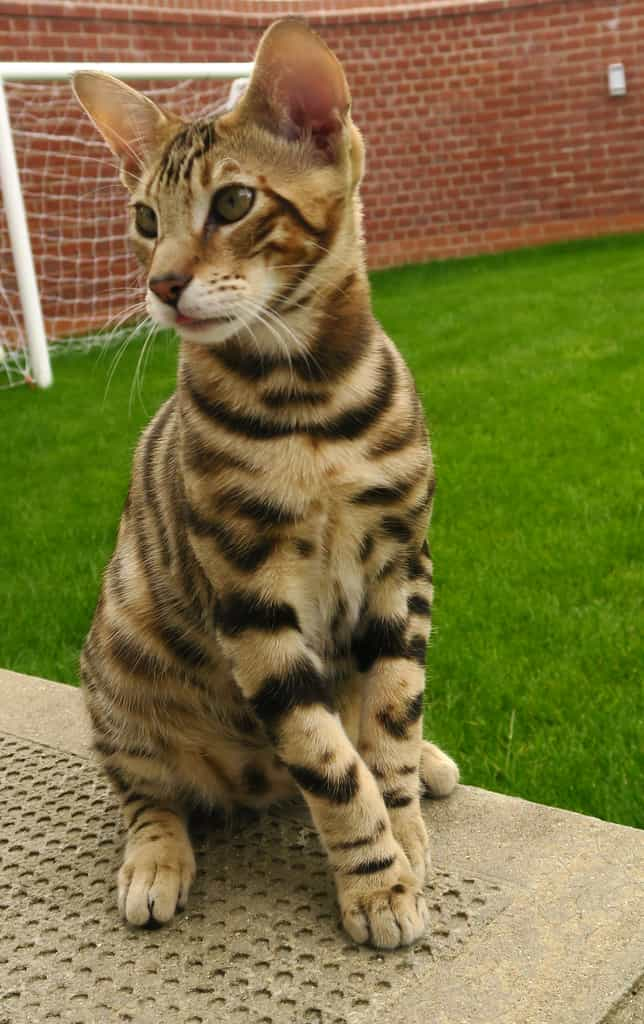

One for sorrow, two for joy. They’ll follow you across the house and jump and climb anywhere. So, keep locked your cupboard and drawers locked.
Toyger cat Breed Caring and grooming
Well, as Toygers are shorthaired, just one-time weekly coat brushing is a good idea. Besides, bathe them and use skin oils to keep their coats shiny. Their nails should be trimmed regularly so that nails can’t grow big. Brush their teeth with a special brush and toothpaste, don’t use human toothpaste.
Provide them with their favorite toys and cat trees and make an opportunity for them to engage themselves with playing and exercising. They are prone to earn new tricks.
So, train them, especially during their kittenhood. They’re fond of going outside. So, let them out with a responsible supervisor to keep them happy. A bored cat can’t make you happy and becomes problematic for the house members. Toygers day to day need isn’t complicated. The only important thing is their vet care.
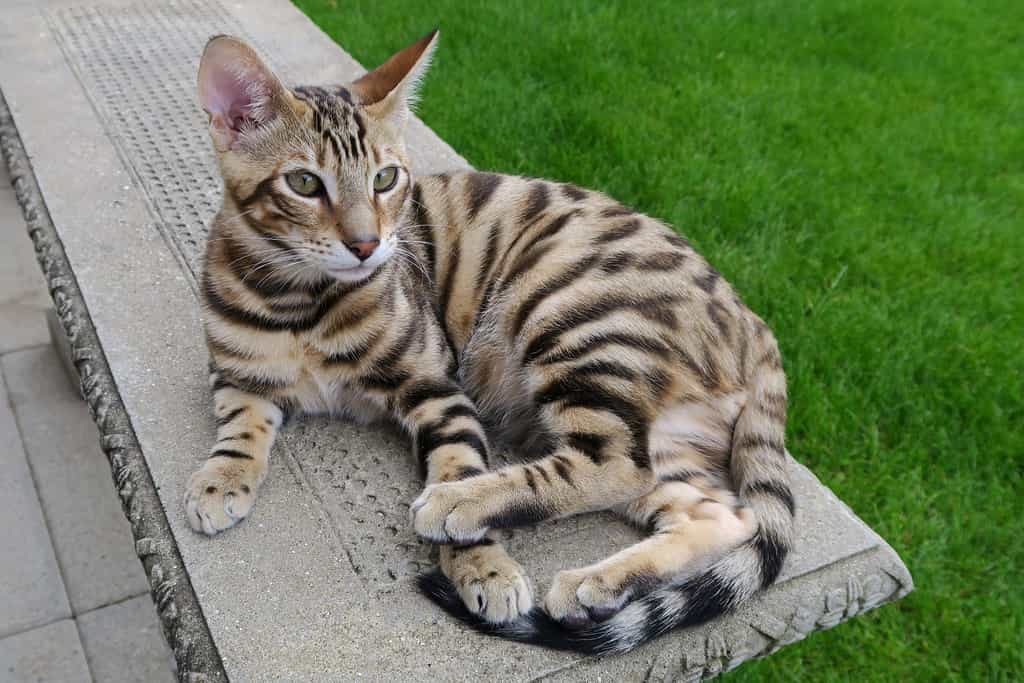

Types of care for Toyger Cat
Coat care:
Their short, thick, velvety coats don’t require frequent brushing if they adequately clean themselves. Only in their shedding season do they need a bit more coat brushing. You can clean their ears if they look dirty with soaked cotton.
Your Toy needs regular nail trimming as they’re prone to scratch. It may be a challenging task for you. If you adopt a pet in its childhood, it is easy to make them used to nail trimming, but if you have adopted an adult cat, it may be difficult for you; in that case, you can go to the vet’s office for a professional groomer.
Dental care:
If your vet recommends a daily toothbrush for your Toyger, then go for it. Use a special toothbrush and toothpaste, as animals can spit out after cleaning. You also can give your kitty chewing toys to clean the teeth and gums.
Flea, Tick, and worm care:
Outdoor cats are more prone to get infected by these problems. So, keep an eye on these problems. Your kitty can get infected by hookworm, roundworm, tapeworm, heartworm, and ticks from other animals and humans. So, prevent them with liquid, powders, collars, and oral medications.
If your Pet vomits or gets sick with Diarrhea, loss of appetite, dull coats, or coughing, then consult your vet immediately. An infected mosquito can be responsible for heartworm. So, be cautious, as it has no medications.
Climate preference and outdoor time:
Toygers are safe to keep indoors, but if you want your cat out, supervise them during the outdoor time, considering the weather conditions. You also let them out in an enclosed yard or keep them in a cat enclosure to save them from injuries and stealing or being lost.
Living needs of Toygers:
The living needs of the Toyger cat breed aren’t hard to manage. Just ensure the health and playing opportunities. They’re very interactive cats and love adventures. So, fix a schedule to play with it, get them out to adventure, and provide them with their favorite interactive toys.
Health and problems that Toyger breeds are prone to
Toygers don’t have other significant health issues except for Hypertrophic Cardio Myopathy(HCM) and heart murmurs. The heart walls get weak and obstruct the blood pumping and distributing process. So, be careful about that. A heart murmur is abnormal heartbeats- a functional disorder of the heart.
A regular vet visit is required for you, Toyger. If the problem is canned early, it can be cured.
Food and nutrition to feed Toyger breed
Any domestic shorthair cat meal is suitable for your Toyger. Consult your Veterinarian to give your Pet the right amount of food as Toyger is a medium-sized breed, so they need small pieces of food. A high-quality cat food with an ideal amount will keep your Toyger slim and fit.
Don’t share your plate with your pets. So, listen to your vet for the right amount and quality. Provide them with enough fresh water to avoid Kidney related problems. Provide them with both wet and dry food.
Wet food keeps their Kidney healthy, and dry food will keep their teeth healthy. If you stick to anyone, it will create boredom for them and will hamper their health. The food should be changed when they’re kittens.
Male VS Female Toygers
There are no distinctive differences between male and female Toygers. Males are a bit larger than females. Males are about 15 Pounds, and females are about 10 Pounds. Female Toygers get their sexual heat at 6 months, and males get the maturity some times later.
Cons of Toyger cats:
- The breed is difficult to find breeders, and adoption is also expensive.
- Can be prone to heart diseases.
Toyger cat Breed adoption
A rare, beautiful, and well-mannered breed that is hard to get. So, treat them like a special gift if you get them.
They originated in the USA and conquered the heart of cat lovers all over the world. Their weight is about 15 Pounds, and their length is about 18 inches.
From where to find a Toyger cat
It is better to find a Toyger to rescue groups. There are some restrictions about the Toyger breed as they have a connection with the Bengal breed. Owners have to seek permission to have it. So, please, be aware of the rules and regulations to have a Toyger.
How to find a reputed Toyger cat breeder?
The breeder abides by the rules and regulations. So, keep an eye on thing points:
- Whether the breeder provides you the certificates and test results conducted over your Toyger.
- The breeder has adequate knowledge and experience of the specific breed you will purchase.
- Ensure that the breeder keeps the contact and is willing to take any responsibility after the purchase.
- Trusted breeders have their websites, and they never tell you that your desires are always available to them. They’ll take time.
Finding a shelter:
Though finding a Toyger in a rescue group is difficult, you can check the rescue groups’ websites.
Toyger Cat Breed Age and Lifespan
The Toyger Cat Breed, known for its resemblance to a miniature tiger, boasts not only a unique appearance but also a commendable lifespan. Typically, a Toyger can live for about 12 to 15 years, a duration influenced by factors such as genetics, environment, and care. This “Toyger Cat lifespan” is a crucial aspect for potential owners to consider, especially when pondering the “Toyger Cat price.” Their longevity is closely linked to “Toyger Cat care tips,” which encompass a range of practices from regular health check-ups to a balanced diet.
It’s important to note that “Toyger Cat health issues,” though not prevalent, can arise, and understanding these potential health concerns is essential for any caretaker. In terms of “Toyger Cat breeding history,” the breed’s relatively recent development means ongoing improvements in health and longevity are likely. For those interested in “finding Toyger Cat breeders,” it’s vital to seek breeders who prioritize health and longevity in their breeding practices.
The lifespan of a Toyger is not just a function of their “rare cat breeds” status but also a reflection of the care and attention they receive. As with all “medium-sized domestic cats,” a well-maintained environment and proper health care play pivotal roles in ensuring a long and fulfilling life.
For those considering “Toyger Cat adoption,” it’s important to understand the commitment involved in caring for these cats over their entire lifespan. This commitment extends beyond the initial allure of their “domestic cat with wild appearance” and requires a deep understanding of “Toyger vs Bengal cats,” especially if considering between the two breeds. Ultimately, the reward of raising a Toyger lies not just in their striking “tiger-striped cat breeds” appearance but in the joy and companionship they bring over the years.
Toyger Cat Breed Training and Exercise
Training and exercise are pivotal for the well-being of the Toyger Cat Breed, renowned for their “active and playful cat breeds” nature. These cats, embodying “Toy tiger cat characteristics,” require regular physical and mental stimulation to maintain their health and happiness. Effective training taps into the “Toyger Cat personality,” harnessing their intelligence and playful nature. Engaging them in activities like interactive play and puzzle games not only stimulates their minds but also strengthens the bond between pet and owner.
When considering the “Toyger Cat price,” prospective owners should factor in the cost of toys and equipment that cater to their exercise needs. It’s also essential to integrate “Toyger Cat care tips” into their exercise regimen, ensuring a balance between physical activity and rest.
For those exploring “Toyger Cat adoption,” understanding their need for activity is crucial. These “intelligent cat breeds” thrive on challenges that engage their instincts, akin to their wild counterparts. Implementing a consistent exercise routine can also mitigate potential “Toyger Cat health issues,” keeping them both physically and mentally fit. The “Toyger vs Bengal cats” comparison often highlights the Toyger’s need for structured play due to their active disposition.
Moreover, for “raising a Toyger kitten,” introducing exercise routines early on is key to developing their social and physical skills. Prospective owners should also consult “Toyger Cat breeders” for advice on the best exercises for their specific cat, considering factors like age and health. In summary, a well-thought-out training and exercise plan is a cornerstone in the care of a Toyger, ensuring these “unique cat coat patterns” felines lead a fulfilled and healthy life.
Toyger Cat Breed Feeding and Diet
Feeding and diet play a crucial role in the overall health and well-being of the Toyger Cat Breed. These “medium-sized domestic cats” require a balanced and nutritious diet that caters to their specific needs. When considering the “Toyger Cat price,” it’s important to also factor in the ongoing cost of high-quality cat food. A well-balanced diet, rich in protein and essential nutrients, supports the “Toyger Cat lifespan,” promoting overall health and vitality. Additionally, understanding “Toyger Cat care tips” related to diet helps in preventing “Toyger Cat health issues,” such as obesity or nutritional deficiencies.
Prospective owners should research “Toyger Cat adoption” thoroughly to understand the dietary preferences and needs of this breed. Since Toygers are “active and playful cat breeds,” their diet should support their energy levels and maintain their “unique cat coat patterns” in prime condition. The diet should be tailored to their life stage, with “raising a Toyger kitten” requiring different nutritional focus compared to adult cats. Consulting with veterinarians or reputable “Toyger Cat breeders” can provide valuable guidance on the optimal diet for these cats.
When comparing “Toyger vs Bengal cats,” it’s important to note that each breed may have distinct dietary requirements despite their similar appearances. Owners should also pay attention to “Toyger Cat personality” when planning their feeding schedule, as some cats may prefer multiple small meals over larger ones. In terms of “cat breed development,” the Toyger’s nutritional needs reflect its status as a relatively new breed, requiring ongoing research and understanding. By providing a diet that fulfills their specific requirements, owners can ensure their Toyger enjoys a healthy, active, and long life.
Toyger Cat Breed Socialization Guide
Socialization is a critical aspect of raising a Toyger Cat Breed, a process that significantly shapes their “Toyger Cat personality.” These “intelligent cat breeds,” known for their “Toy tiger cat characteristics,” benefit immensely from early and consistent socialization. Introducing them to various environments, people, and other pets helps in developing their social skills and adaptability. This aspect is particularly important for those considering “Toyger Cat adoption,” as it ensures the cat’s smooth integration into a new home and family. Effective socialization also plays a role in preventing “Toyger Cat health issues” related to stress and anxiety.
When embarking on the journey of “raising a Toyger kitten,” it’s crucial to expose them gently to different stimuli, respecting their pace and comfort levels. Engaging in regular play sessions and positive interactions builds their confidence and fosters a well-rounded temperament. Those researching “Toyger Cat price” should also consider the time and effort required for proper socialization. Seeking advice from experienced “Toyger Cat breeders” can provide valuable insights into the breed’s socialization needs.
In the context of “Toyger vs Bengal cats,” both breeds share a need for social interaction, though individual personalities may vary. Including “Toyger Cat care tips” that focus on socialization can help new owners navigate this process effectively. The breed’s “unique cat coat patterns” and appearance often draw attention, making it even more important for them to be comfortable around people and other animals. Overall, a well-socialized Toyger is a joy to have, contributing to a harmonious and enriching relationship between the cat and its human companions.
Toyger Cat Breed Maintenance and Safety Tips
Maintaining a Toyger Cat Breed involves a blend of grooming, safety measures, and overall care. Recognized for their “tiger-striped cat breeds” aesthetics, Toygers require regular grooming to keep their unique coat in top condition. This includes routine brushing, which not only maintains their striking “unique cat coat patterns” but also helps in bonding with the cat. Understanding “Toyger Cat care tips” for grooming is essential, especially considering the “Toyger Cat price,” which often reflects the breed’s rarity and maintenance needs. Regular nail trimming, ear cleaning, and dental care are also vital to prevent “Toyger Cat health issues.”
Safety is paramount for these “medium-sized domestic cats.” Ensuring a safe indoor environment, free from hazards, is critical, especially when “raising a Toyger kitten.” For those exploring “Toyger Cat adoption,” it’s important to create a cat-friendly space that caters to their “active and playful cat breeds” nature. This includes secure windows, safe climbing structures, and elimination of toxic plants or substances. Consulting “Toyger Cat breeders” can provide additional tips on creating a safe environment.
Comparisons like “Toyger vs Bengal cats” often highlight the Toyger’s similar need for safe play and exploration spaces. Additionally, keeping up with vaccinations and regular veterinary check-ups is crucial in maintaining their health and longevity, as outlined in “Toyger Cat lifespan” considerations. For prospective owners, “finding Toyger Cat breeders” who prioritize health and safety in their breeding practices is essential. In summary, thoughtful maintenance and safety planning are key in ensuring a happy, healthy life for a Toyger Cat, making them a cherished part of any family.
Conclusion
In conclusion, the Toyger Cat Breed presents a fascinating blend of a wild appearance with a friendly, domesticated nature. Each aspect of their care, from understanding the “Toyger Cat lifespan” to implementing “Toyger Cat care tips,” plays a vital role in ensuring these “intelligent cat breeds” lead a fulfilling life. The commitment to their well-being starts with the consideration of the “Toyger Cat price” and extends through every facet of their life, including diet, exercise, socialization, and safety. Whether it’s the joy of “raising a Toyger kitten” or the satisfaction of providing a loving home through “Toyger Cat adoption,” each journey with a Toyger is unique and rewarding.
Their “unique cat coat patterns” and “Toy tiger cat characteristics” make them a standout among “medium-sized domestic cats,” capturing the hearts of cat lovers everywhere. The decision to bring a Toyger into your home, whether through purchase or adoption, is a significant one, often influenced by factors like “Toyger vs Bengal cats” comparisons and advice from “Toyger Cat breeders.” Ultimately, the Toyger’s combination of striking beauty, playful personality, and affectionate nature makes them not just a pet but a cherished member of the family, bringing joy and companionship to their human counterparts.

